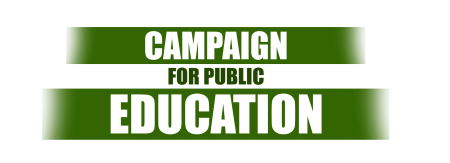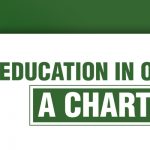Being black & queer in school; what its like
by Shantal Otchere nowtoronto.com Jamea Zuberi is a teacher with the TDSB and member of the Black Student Achievement Advisory Committee (BSAAC). Blowback over Black Lives Matter – Toronto’s (BLM-TO) protest at Pride last summer exposed the ease with which we are capable of slipping into racist impulses. Public and politicians’ reactions also revealed the glaring inconsistency between people’s imaginings about the makeup of the LGBTQ community and the reality of what that community actually looks like.
According to a soon-to-be released student census conducted between 2011 and 2012, the first of its kind to look specifically at the intersection of race and sexuality, our education system seems no more prepared to support LGBTQ students of colour than the city is to understanding their existence. Queer students of African descent in the Toronto District School Board (TDSB) reported lower levels of enjoyment and feelings of belonging than all straight and non-racialized LGBTQ students.
The census, entitled Black LGBTQ Students In The TDSB, found less than half – some 43 per cent – of Black LGBTQ students enjoy school, while the levels of enjoyment are significantly higher for hetero students, 60 per cent of whom reported they enjoy school. While 48 per cent of Black LGBTQ high school students describe their school as “friendly,” this number shoots up to 58 per cent for all LGBTQ students and 68 per cent for heterosexual students.
“We don’t have the systems and the support in place – this is from the students’ mouths,” says Jamea Zuberi, a teacher with the TDSB and member of the Black Student Achievement Advisory Committee (BSAAC).
Established in 2016, BSAAC met earlier this month to discuss the distinct needs of Black LGBTQ youth. The committee’s 30-plus members, who include trustees Tiffany Ford (Ward 4) and David Smith (Ward 19) and human rights lawyer Anthony Morgan, invited students and reps from the 519 and Supporting Our Youth (SOY) to begin the conversation around supporting queer youth of colour.
For Zuberi, who first tabled the need for the discussion at BSAAC, it’s an issue that “hits home.” As a member of the LGBTQ community who helped found Pride’s Blockorama, Zuberi says, as one of few TDSB teachers comfortable being out, her work as an educator underscores the importance of her efforts to promote a better understanding of what’s known in academic circles as intersectionality.
While the term may be plucked out of academia, the lived experiences for queer youth of colour are a reality. Whether they join a gay-straight alliance (GSA) or Black-issues-focused student group, they’re often confronted with the fact their identity as both Black and queer is not being addressed, says Lee, a Grade 11 student in a GTA-area high school.
“In school, or in general, you get to a place where you don’t necessarily know which part of yourself to fight for, because the Black community, a lot of the time, don’t see the queer community and the queer community don’t see the Black,” says Lee, who asked that her real name be withheld. “It’s like you’re Black, you’re female, you’re queer. How do I choose?
“We already know it’s not easy to be Black – and then to be queer and then to have [our own] families who are homophobic. To have all of those things on top of you and then people expect you to come to school and learn – it’s impossible,” she says.
Amita Handa, who does equity work at the board, agrees. Some teachers are “uncomfortable” discussing LGBTQ issues, she tells me in a conference call with Lee. “More training in this area will be helpful for teachers who may not know how to recognize or respond to homophobia or the needs of queer students of colour.”
As the head of her school’s GSA, Lee says, “a lot of teachers expect me to do their job in terms of advocating for the LGBTQ community.”
Since faculty give her name to all LGBTQ students of colour in need of mentorship, “it doesn’t feel like [I’m] coming to school to learn,” Lee says. “[I’m] basically coming to school to educate people on stuff that teachers should be doing.”
The Canadian Mental Health Association has found that LGBTQ youth face higher rates of depression and anxiety, along with other mental heath issues; risks for suicide and substance abuse are also much higher, at least 14 times the rate of heterosexual teens.
The added layer of racialization can increase the risk, says Lisa Gore Duplessis, the director of programs and community services for the 519.
“Imagine oppression as a heavy bag. Imagine the weight of having to manage racism mixed with community indifference to your lived identities, to homophobia, to possibly bullying… to just growing up [and] being a teenager,” she says. “What a heavy weight that must be.”
Leslie Ramsay-Taylor, an educator who specializes in anti-oppression and social justice work in the LGBTQ community, paints a vivid picture of the factors at play for queer youth of colour, particularly Black males from underserved communities. Black queer youth must navigate racial profiling and police harassment, disenfranchised communities and culturally ingrained homophobia, and have few spaces where they can thrive.
“What I’m trying to give you is a picture of torture before this young man even gets to school,” Ramsay-Taylor says. “By 18, we can see that if there’s not an intervention, the outcome might not be healthy.”
We know that to be the case for Black students generally. Recent reports reveal the education system subjects Black students to higher rates of maltreatment and suspensions and undermines their potential by streaming them into programs below their ability.
The kind of intervention Ramsay-Taylor is calling for requires equity training not yet on the horizon for teaching staff (the BSAAC will make recommendations to the school board) and an understanding of students that might be contrary to educators’ commonly held beliefs.
More than anything, schools need a curriculum and programs that recognize and normalize the multifaceted identities of its student body. Like the needs brought forward by BLM–TO last year, the needs of Black queer youth can’t be ignored, says Lee.
“I want us to have more conversations. Nothing can be changed if we don’t start talking about it,” Lee says. “Discrimination isn’t just a queer issue. It’s everyone’s.”



